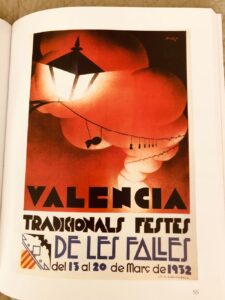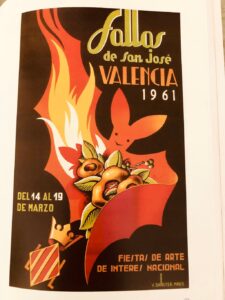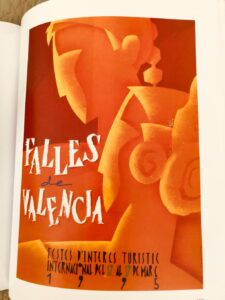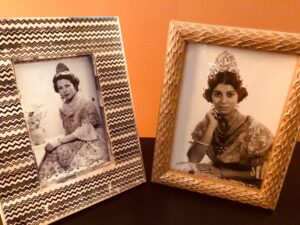I don’t know why, but I’ve been feeling homesick for Spain lately, more than usual. Actually, I do know. It all started when I read the article in El País “Expatriates Choose Valencia as the Best City in the World to Live in.” Then to make matters worse, Madrid is fifth on the list of the first ten! What the hell am I doing in the United States and Philadelphia of all places? Of course, it doesn’t help that I have been feasting on Valencia oranges from the ACME. Even though they come from Florida, every bite is luscious and their juice is sweet and succulent. Then, I find out that some dear neighbors in my building are visiting Valencia, would I mind getting together so they can pick my brain before their trip?
I remember going to Valencia, my birth city, from Madrid as a young girl this time of year for Las Fallas holiday. The drive took about five hours then; half an hour before reaching our destination, the sweet smell of the flowering orange trees would permeate the air and we knew that we were by the famous Valencian orchards, outside the city limits. Usually, I went with my uncle Pepe and his family, my father had lost interest in our hometown and we still didn’t own a car. I always stayed with my cousins in my Godmother’s house, their home on Gran Vía Germanías had front row balconies to many of the festivities.
Las Fallas –from the Latin fax, meaning torch– has no translation in English, but I’ll try describing them. Every year, on the week of March 19th, the feast of Saint Joseph’s, each neighborhood builds huge artistic monument satirizing local politics, a famous person, an unusual event, anything, really; the most audacious the better. Each Falla, firecracker-filled, is made of wood, cardboard, wax, even papier mâché, the most combustible the better, because they are all burned down at midnight on the evening of March 19, La Nit del Foc, Valencian for Fire Night. Only the most fanciful figure, most daring ninot (doll or puppet) is saved each year in the Fallas Museum as Ninots Indultats (the saved puppets).
Originally, Las Fallas was a pagan holiday to celebrate the coming of spring; sort of an enormous spring cleaning for carpenters to get rid of leftover wood scraps. As early as 1740 there are reports of fire hazards in the narrow streets, nowadays a Falla can tower up to five stories. In 2016 Las Fallas were declared an “Intangible Cultural Heritage of Humanity by UNESCO.” During five days there are Despertàs (wakeup bands) first thing in the mornings; Mascletàs (fireworks galore) at lunch time; parades, with women and men dressed in the regional costumes, and L’Ofrena de Flors (flower offerings) to the Virgin of Los Desamparados, the patron saint of the city.
All my Valencian cousins dressed up in the ornate traditional outfits, which were passed on from generation to generation. I have a photo of my mother looking radiant in her attire. I don’t remember feeling bad not having a dress of my own, I guess I felt as a Madrileña already. However, many years later, on a trip back to visit my Godmother, she took me to the photographer and I had my portrait taken as a real Valenciana: hairdo with hair comb, jewelry, the whole nine yards, no matter how I felt.
My neighbors are back from their trip, they brought me a beautiful book, Una crida a la festa (A call to the fiesta), a selection of posters announcing the Fallas from 1929-2021. It’s interesting to follow the meaning of Spanish politics just looking at sample posters. During the liberal Spanish Republic, in 1932, the poster was written in Valencian;  under Franco’s dictatorship the text is in Spanish—since he forbade the regional languages—with a clear added mention of Saint Joseph and the rubric of “art festivities of national interest” to highlight his policies to promote tourism. A poster in 1995, under the contemporary democracy, is again in Valencian, and Saint Joseph has disappeared by the wayside.
under Franco’s dictatorship the text is in Spanish—since he forbade the regional languages—with a clear added mention of Saint Joseph and the rubric of “art festivities of national interest” to highlight his policies to promote tourism. A poster in 1995, under the contemporary democracy, is again in Valencian, and Saint Joseph has disappeared by the wayside.


This year’s Fallas start next week and I wonder why I’m homesick, even when I know that going to Valencia from Madrid in the fast train, which arrives in less than two hours, one can’t smell the orange trees anymore; they have disappeared to make room for modern subdivisions with gigantic shopping malls.


I love it but made me sad!
J
Oh, no! I didn’t mean to make you sad… nostalgia is that way, Concha
Lots of comments from faithful readers!
Wonderful!
Thanks, Elaine, so glad you liked it! Concha
Love this, Concha.
Thanks, Mary. So glad you liked it, Concha
Good story, Concha–well done, Herman
Thanks so much, Herman. Glad you liked it, Concha
Wonderful images. I can smell the oranges. XO, Alan
Thanks, Alan. So glad you liked it! Concha
Maybe you can go to Valencia next March.
This was lovely, Concha. Thanks for sharing this with me and your other fans! Randi
Thanks so much, Randi. Glad you liked it, Concha
Estás guapísima vestida de valenciana, Concha. No recuerdo haber visto esa foto.
Muy nostálgico el artículo, en efecto. Dentro de poco volverás a Madrid y volveremos a ir a sitios. Me gusta que te sientas madrileña.
Besos, Ángeles
Gracias, Ángeles, me elegro que te guste, Concha
My friend Cristina, who is Cuban-American tells me that she would also dressed up in a traditional Valencian dress for Carnaval. Who knew? Particularly, when in Cuban they think all Spaniards are Galician! Concha